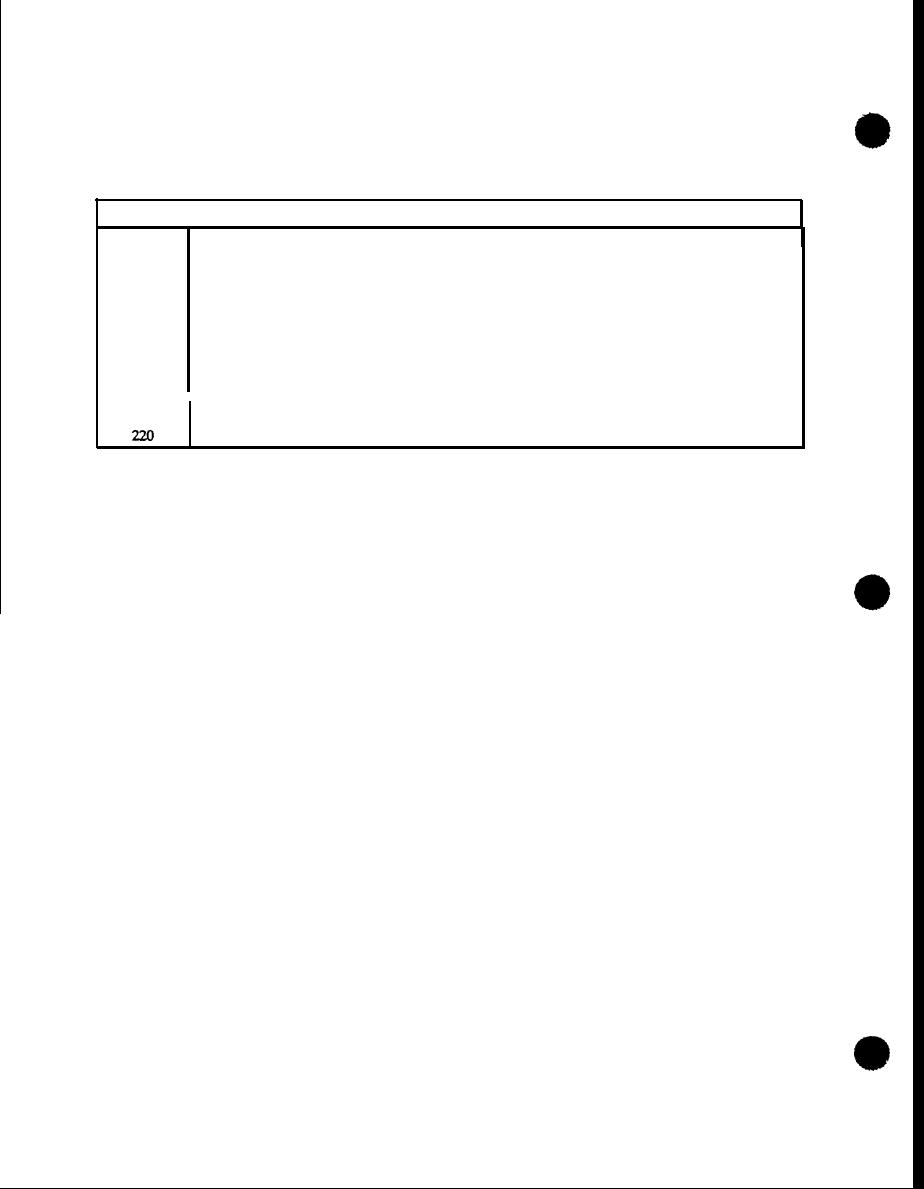 |
|||
|
|
|||
| ||||||||||
|
|  MIL-H-904J
TABLE XII. Classification of visual defects Continued
Minor
Defects
I
211
Trolley wheel gear and drive pinion not as specified (see 33.73)
I
212
Trolley frame (side plates) not connected by an equalizing pin (see 33-7.4)
213
Hoist types C, D, E, F, and G not equipped with chain container when specified (see 33.8)
214
Type H hoists not capable of operation lever motion specified (see 3.8.3)
215
Type H hoists, lever length not as specified (see3.8.3)
216
Type H hoists, operating controls and instruction marking not as specified (see 3.8.4)
217
Paint not as specified paint surface broken (see 3.10)
218
Hoist identification data missing, incomplete, illegible, inadequately attached (see 3.11)
219
Lubrication fittings damaged (see 3.9)
Hoist not clean of foreign material and excess lubricant (see 3.12).
4.7 Tests (see 6.3). Testing shall be accomplished in a sequence that will allow performance
of all tests with no replacement components, for example: static load test (see 4.7.1), dynamic
overload test (see 4.7.2), efficiency test (see 4.73), track clamp test (see 4.7.4), trolley test (see
4.7.5 and 4.7.6), life cycle test (see 4.7.8), drop test (see 4.7.7), and high-impact shock test (see
4.7.9), except that the contractor has the option to submit an untested hoist for the drop test (see
4.7.7), and an untested hoist for the high-impact shock test (see 4.7.9).
4.7.1 Static overload. The hoist shall support a static load of twice the maximum rated load
for 10 minutes. The load shall be suspended with the hoist load chain extended to the limit of the
hoist rated lift height. This extension may be changed to a minimum of 1 foot, provided the
contractor demonstrates that the entire length of chain will support 200 percent of rated load.
The suspended test load shall be held by the hoist brake for 10 minutes. Evidence of failure or
permanent deformation of hoist parts shall be cause for rejection.
4.7.2 Dynamic overload. The hoist, fixed capacity and convertible capacity (convertable hoists
shall be reeved for their fixed load rating) shall be loaded to 150 percent of rated load and
operated by hoisting and lowering the test load through the required lift height. With the test
load clear of the ground, a minimal length of 1 foot of load chain shall be overhauled in each
direction. This test shall be performed at a minimum hand speed of 10 feet per minute (ft/min)
(hand chain or hand lever). Trolley type hoists shall be operated back and forth over a section
of track 8 or more feet in length with the 150 percent load suspension. This test shall be
performed 10 times at a minimum trolley speed of 15 ft/min. Hoist and trolley shall operate
satisfactorily and the brake shall exhibit no sign of slippage. Evidence of failure, permanent
deformation, or excessive wear (see 4.7.8.2) of hoist parts shall be cause for rejection.
22
|
|
Privacy Statement - Press Release - Copyright Information. - Contact Us |